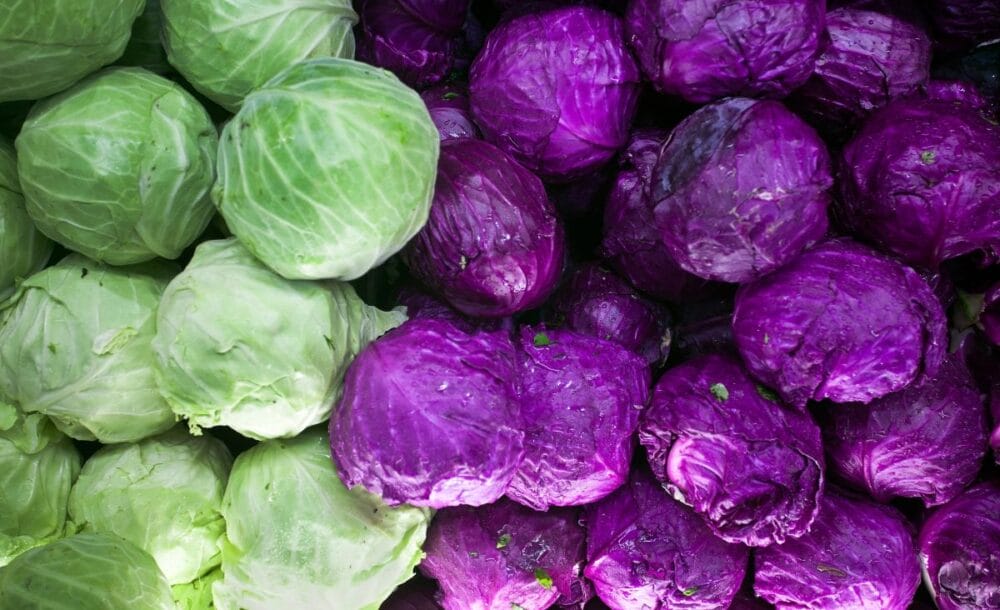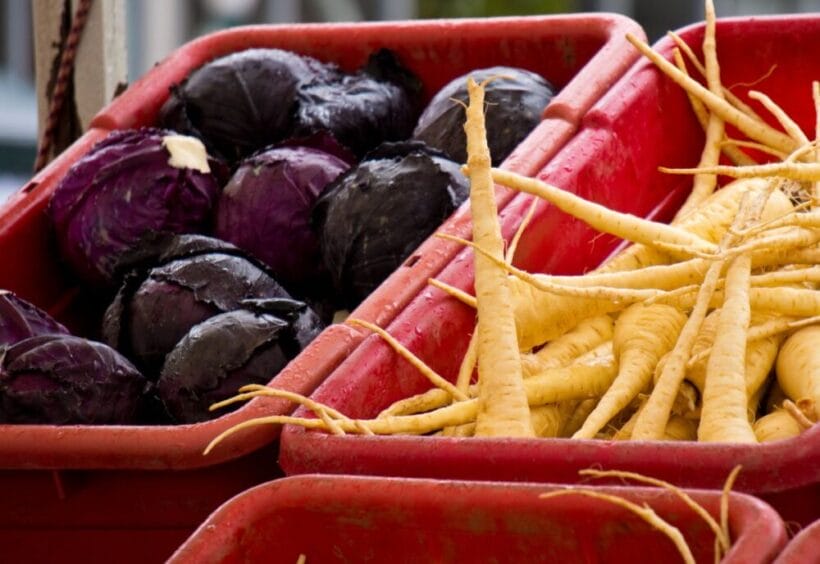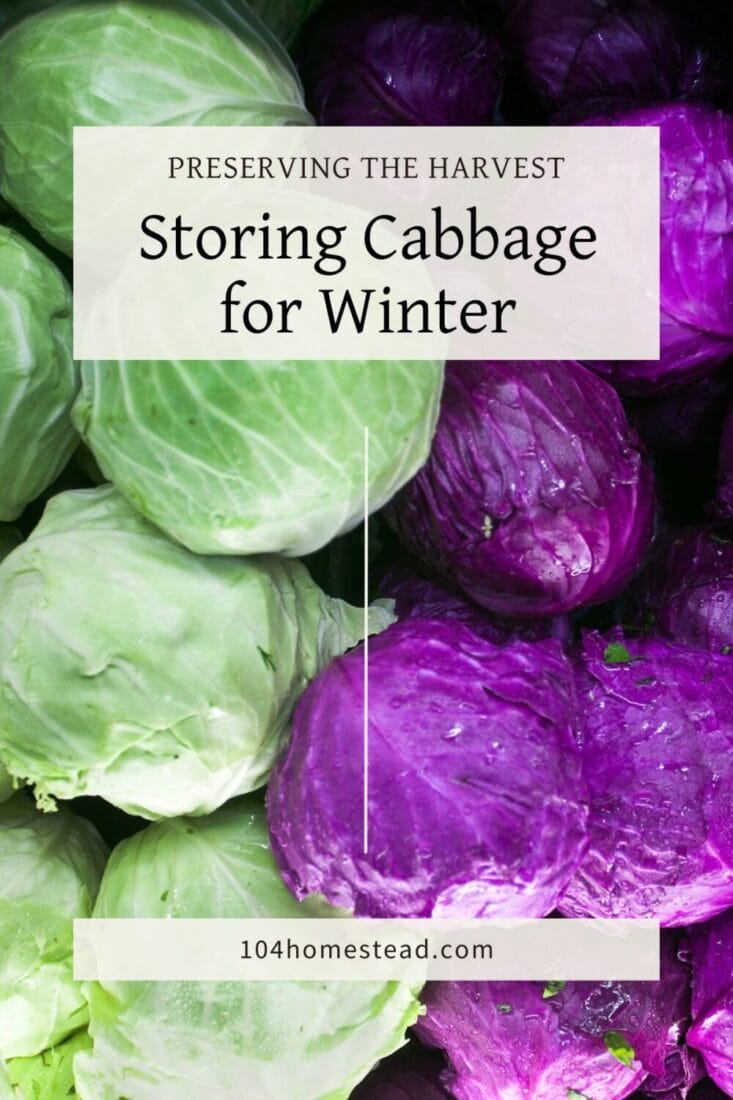Preserving the Harvest: Storing Cabbage for Winter
Learn how to store cabbage for the winter and preserve its freshness using different methods to keep your cabbage crisp and delicious.

The harvest season is winding down, so now is the time to get ready for the long winter. Putting away your harvest to enjoy during the off-season is a big part of preparing for winter. Cabbage is a hardy and adaptable vegetable that, with proper care, can be preserved for months.
Here are some things you can do to make sure your cabbage stays crisp and fresh all winter.
Choosing the Right Cabbage from the Store
Selecting the right cabbage is very important before putting it into storage. When choosing the best cabbage to store for the winter, you should think about the type.
There are many kinds of cabbage, and each one tastes and feels different. As an example, Savoy cabbage has wrinkly leaves and a mild, tender taste. Napa cabbage, on the other hand, has a milder taste and is great for fermenting.
Physical Attributes
Look closely at the cabbage heads. Choose ones that feel firm and are heavy for their size. If the cabbage feels solid and dense, it means it is well-hydrated and has crisp leaves. Stay away from heads that have soft spots or damage from bugs.
Leaf Quality
You should look at the cabbage’s outer leaves. They should have bright colors, be tightly packed, and not be discolored. The healthy leaves on the outside protect the inner layers while they are being stored. If you see any wilting, yellowing, or browning, it could mean that the plants were not stored properly before you bought them.
Size Matters
Think about how big the cabbage head is in relation to how much space you have and how much food you need. For faster consumption, smaller heads might be better, while larger heads might be better for families or people who want to keep them for a long time.
Uniformity
Pick cabbages that are all the same size and shape. Maintaining the same size and shape throughout the growing process ensures even maturation, which makes it easier to guess when the best time is to harvest. Also, this makes it easier to store things because heads with the same shape stack better.
Harvesting Your Homegrown Cabbage
Cabbage is at its peak flavor and nutritional value when picked just before the first frost. Hold off until you can gently squeeze the heads and feel a firmness that indicates they are fully grown. Too early of a harvest may result in undeveloped heads, while too late may increase susceptibility to pests or splitting.
When you are ready, use a sharp knife to remove the cabbage head from the soil. Keep the cut as clean as possible to prevent the spread of disease. After picking, get rid of any wilted or damaged outer leaves. By doing so, you reduce the risk of rot and disease while storing. To keep the inner layers safe during transport and storage, leave a few of the outer leaves attached.
Consider harvesting your cabbage in the morning when temperatures are cooler. This helps preserve the crispness and freshness of the leaves.
Creating an Ideal Root Cellar Environment
Storing cabbage successfully depends on keeping it in ideal conditions. Your root cellar needs to be kept at a constant temperature of 32 degrees Fahrenheit (0 degrees Celsius) and a relative humidity of 95%. Cabbages prefer cool, moist environments, and a root cellar provides the perfect setup for this.
Storage Bins or Shelves
Put the harvested cabbages in containers or on shelves with some breathing room between each head. Proper air circulation is essential in preventing moisture buildup and discouraging the growth of mold or rot.
Tip: Wrap each individual cabbage head in a layer of newspaper before placing it in storage. This helps to absorb excess moisture and provides an extra layer of insulation to keep the cabbage fresh and crisp.
Check Regularly
Cabbages are hardy plants, but even so, it is a good idea to check on them now and then. To stop the spread of spoilage, remove any decaying or damaged heads. This routine check will keep your winter cabbage supply crisp and delicious.
Separate Varieties
It is a good idea to keep different types of cabbage in different storage areas if you have harvested more than one. Different types may have different storage needs or shelf lives, so it is best to keep them in separate locations to ensure consistent quality.
Darkness Matters
Root cellars are naturally dark, and this darkness is beneficial for cabbage storage. Light causes chlorophyll to form, which can alter the taste and texture of the cabbage. For optimal results, store your cabbages in a dark, cool area of your root cellar.
Utilize Ventilation
Ethanol gas can speed up the ripening and spoilage of cabbages, so it is important to make sure there is enough air flow. Make sure your root cellar has a way for air to flow or that air is exchanged on a regular basis to keep it a healthy place to store things.

Keeping Cabbage in the Refrigerator
Refrigerating cabbage is a great way to preserve its crispness and flavor if you plan to use it within a few weeks. After picking, discard any outer leaves that are limp or wilted and keep only the clean, sturdy ones. The vegetable crisper drawer in the fridge is the perfect place to keep a whole cabbage. To prevent moisture loss, you can wrap the cabbage in a damp paper towel and then place it in a perforated plastic bag. If you want to enjoy the cabbage at its peak flavor and texture, check it frequently for signs of softening or discoloration and use it as soon as possible.
The easiest way to keep your cabbage fresh and ready to use in a variety of recipes is to store it in the refrigerator.
Freezing Cabbage for Longevity
Freezing cabbage is a practical method that keeps the vegetable fresh for a long time.
First, you should clean and shred the cabbage. Shredded cabbage should be blanched for a few minutes in boiling water before being cooled rapidly in an ice bath. Once the cabbage has been drained, it should be packed into freezer bags with as little air as possible to prevent freezer burn. Bags should have dates on them so they can be easily tracked.
Using this method, you can add a taste of summer to your winter meals by including cabbage in stir-fries, soups, or casseroles and still enjoy its crisp texture.
Fermenting for Sauerkraut
Get started on the fun of fermenting ordinary cabbage into the deliciously sour delicacy known as sauerkraut. This time-honored technique not only improves taste but also provides probiotics that are good for the digestive system.
If you’re new to the world of sauerkraut, fear not! Check out our sauerkraut recipe for a step-by-step guide to crafting this fermented classic. From the crisp crunch to the zesty kick, homemade sauerkraut brings the essence of your homestead harvest to your table with every satisfying bite.
Cabbage Storage FAQs
If you’ve found value in this blog post and enjoyed reading it, why not share it with your Pinterest community? Pin the image below and spread the love!

With these storage methods, you can enjoy homegrown cabbage well into the winter months. Experiment with different techniques to find the one that suits your homesteading style best.
What is your favorite way to preserve and enjoy cabbage during the winter months?

